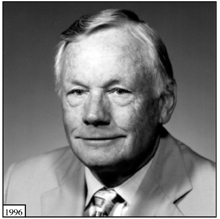|
NOTAM 08-2012 Armstrong
Dear Golden Eagles, Neil’ s background, his life, aeronautical achievements, and career as an astronaut are well documented in numerous books, articles and papers, and constitute the stuff of legend, for legendary he was. It would be difficult to identify a contemporary American who had achieved so much in his lifetime as Neil Armstrong nor one who had ascended the heights of global fame and recognition that accompanied his remarkable successes. In spite of all that, he remained a humble man and used his fame not for personal gain but to help his fellow man. He was born in 1930 in Wapakoneta, Ohio, grew up there, and developed an avid interest in aviation at an early age, attaining his pilot license at 15 before he received his driver’ s license. He studied aerospace engineering at Purdue University via a Navy scholarship program, and, after two years at Purdue, was called to active service by the Navy in 1949, and reported to Pensacola for flight training. He received his wings 18 months later reporting to Fleet Aircraft Service Squadron 7 at NAS North Island. Two months later, he was assigned to Fighter Squadron 51 (VF-51), an all-jet squadron, and made his first flight in a jet, an F9F-2B Panther, on January 5, 1951. In June, he made his first jet carrier landing on the USS Essex and was promoted the same week from midshipman to Ensign. By the end of the month, the Essex had set sail with VF-51 aboard bound for Korea, where they would operate as a ground-attack squadron. Neil first saw action in the Korean War on August 29, 1951, as an escort for a photo reconnaissance aircraft over Songjin. On September 3, 1951, Neil flew armed reconnaissance over the primary transportation and storage facilities south of the village of Majon-ni, west of Wonsan. While he was making a low altitude bombing attack, Neil’s F9F Panther was hit by anti-aircraft fire. While trying to regain control, he collided with a pole at a height of about 20 feet, which sliced off an estimated three feet of the Panther’s right wing. Neil was able to fly his aircraft back to friendly territory, but due to the loss of the right aileron, ejection was his only safe option. He planned to eject over water and await rescue by Navy helicopters, so he flew toward an airfield near the coast, ejected over water, but after his ejection was blown back over land. A jeep driven by a roommate from flight school picked him up; it is unknown what happened to the wreckage of his F9F. Neil flew 78 missions over Korea for a total of 121 hours of combat time, most of which were in January 1952. He received the Air Medal for 20 combat missions, a Gold Star for the next 20, and the Korean Service Medal. Neil left the Navy at the age of 22 on August 23, 1952, was promoted to Lt ( jg ), United States Naval Reserve, and returned to Purdue to complete his studies. Following graduation from Purdue, Neil was accepted as an Engineering Test Pilot with NACA ( NASA’ s precursor ) and over the years was involved in numerous highly demanding leading edge flight test programs including high altitude testing in the X-15 in which he completed seven missions. In 1962 he was selected for NASA’ s Astronaut Corps, commanded Gemini 8 in 1966, was the back-up commander for Apollo 8, and in March 1969 was selected to be the first person on the moon as a member of the crew of Apollo 11. An everlasting moment witnessed on TV by millions around the world occurred when Neil set his left boot on the lunar surface at 2:56 UTC July 21, 1969. From that moment on his name was forever chiseled into the historical record of Great Americans. Following his retirement from NASA in 1971, Neil led a very active life as a college professor, served on two Presidential Commissions, worked for several large corporations, and continued to receive praise and recognition for his heroic efforts during the first moon landing. His awards included the Presidential Medal of Freedom, the Congressional Space Medal of Honor, the Robert H. Goddard Memorial Trophy, the Sylvanus Thayer Award, the Collier trophy, and the Congressional Gold Medal. Throughout the US there are more than a dozen schools named in his honor, and many places around the world have streets and buildings named for him. Other awards and other forms of recognition seemed to abound as his fellow citizens continued to honor him for his achievements throughout his life. But there was one symbol of achievement that he held above all others. In 2010 aboard USS Eisenhower a ceremony took place to present Neil with his Naval Astronaut wings. After accepting those, he responded in his own humble and unassuming way with the following words: Neil Armstrong : Naval Aviator, combat veteran, aerospace engineer, Astronaut, space explorer, teacher, corporate executive, and Golden Eagle. A man of humble origins, who realized his dreams and showed what Americans are capable of achieving, has made his Last Take-Off. He will be missed.
|
